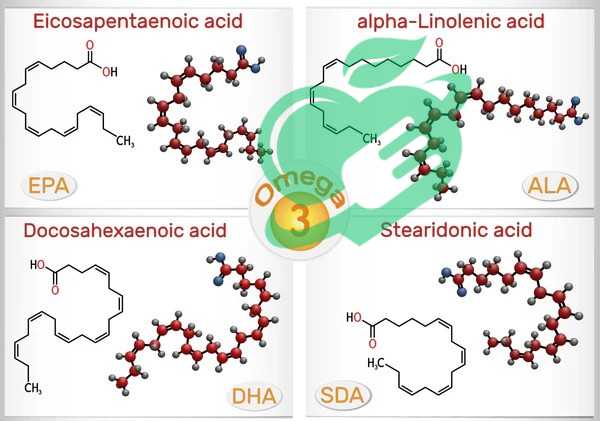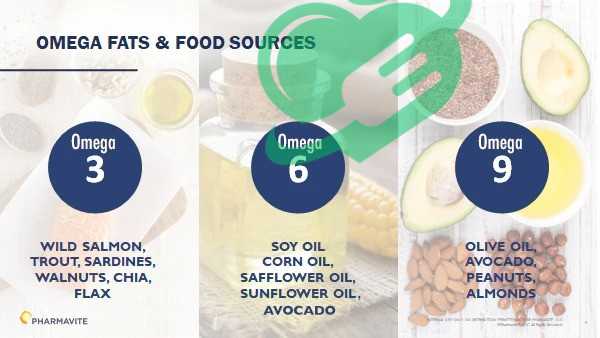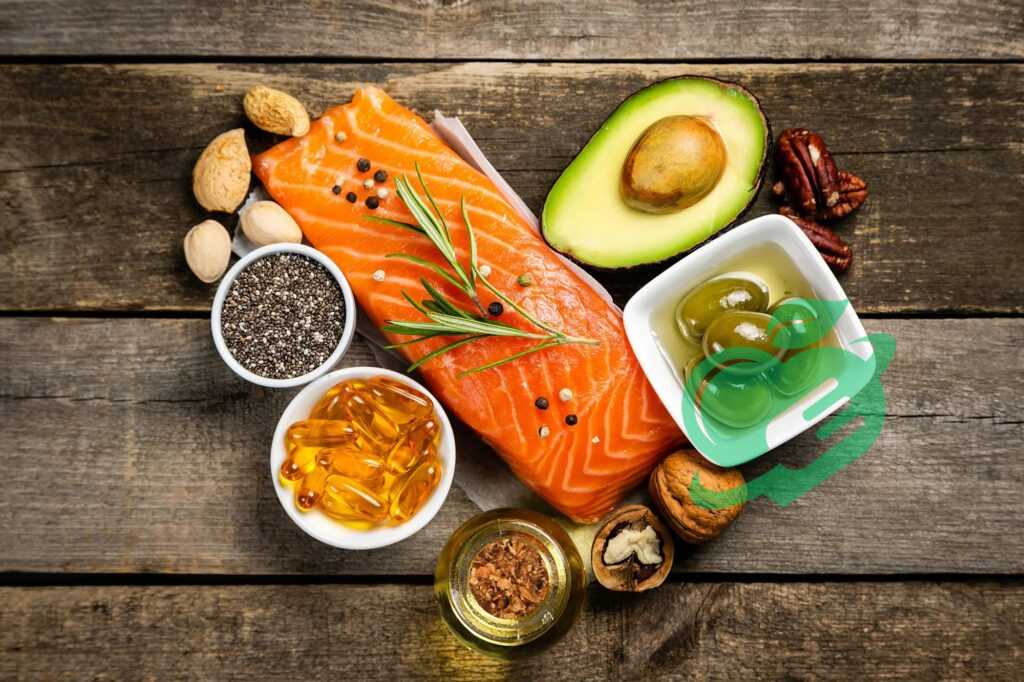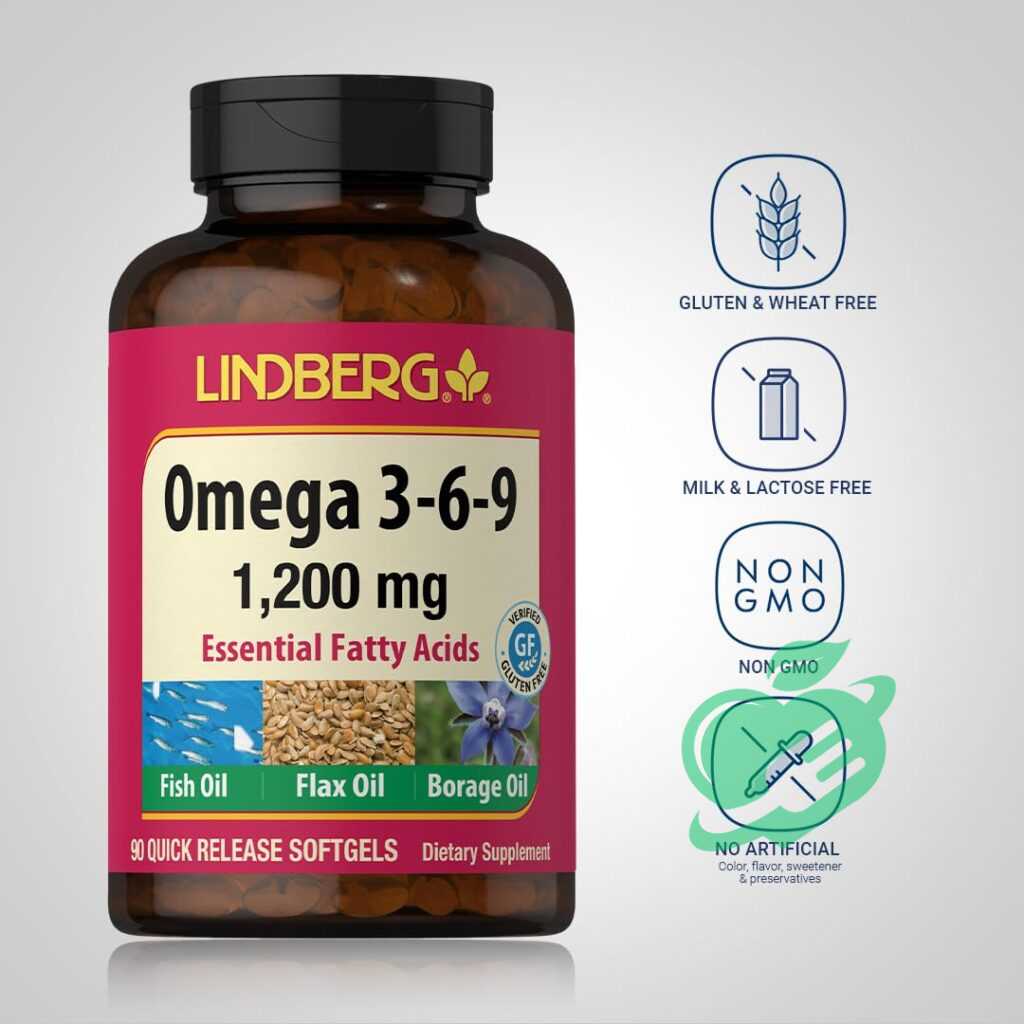Omega-3, Omega-6, Omega-9: Decoding the ABCs of Essential Fatty Acids

What Are Omega-3, Omega-6, and Omega-9?
Fats often get a bad rap, but not all fats are bad. Some fats like essential fatty acids or EFAs—especially Omega-3, Omega-6, and Omega-9—are super important for your overall health.
- Omega-3 Fatty Acids: These are good fats that our brains need. You can find three main kinds: ALA (Alpha-linolenic acid), EPA (Eicosapentaenoic acid), and DHA (Docosahexaenoic acid).
- Omega-6 Fatty Acids: These also fall into the good fat category and are key for hormones and keeping your skin healthy. Linoleic acid is the most common type.
- Omega-9 Fatty Acids: Unlike Omega-3s and Omega-6s, these are fats your body makes on its own, but they’re still good to get from foods.
Read also: Fueling Your Body: How Thiamine Deficiency Impacts Energy Levels
Why Are Essential Fatty Acids Important?
Getting these EFAs in your meals is super important for a bunch of reasons:
- Brain Health: Omega-3s are great for your brain function and mood.
- Reducing Inflammation: Omega-3s and Omega-6s help control inflammation.
- Heart Health: Omega-9s are good for your heart and cholesterol.
People often find that when they get a good amount of these fats in their diets, they feel better both physically and mentally. Just a little more Omega-3 from foods like salmon or walnuts can boost your energy and mood!
Read also: Sage Leaves : Everything You Need to Know

Breaking Down Omega-3s (ALA, EPA, DHA)
Let’s dig deeper into Omega-3 fatty acids, which include three key types: ALA, EPA, and DHA. They each play unique roles in keeping us healthy.
- ALA (Alpha-Linolenic Acid): This plant-based Omega-3 is mainly found in flaxseeds, chia seeds, and walnuts. You need to get it through food since your body can’t make it.
- EPA (Eicosapentaenoic Acid): Mostly found in fish oil, EPA is known for its anti-inflammatory perks and might help with heart health.
- DHA (Docosahexaenoic Acid): Also comes from fish, DHA is super important for brain health and is a big part of our brain and eye tissue, helping with mental function and vision.
Read also: Vitamin C Emergen C: What You Need to Know
Health Perks of Omega-3 Fatty Acids
Adding Omega-3s to your meals isn’t just about good eating; it brings a lot of health benefits:
- Heart Health: Eating Omega-3s can help lower cholesterol and blood pressure.
- Mental Well-being: Omega-3s are linked to lower levels of depression and anxiety, helping you feel better overall.
- Joint Health: They can help with reducing joint pain and stiffness, so they’re good for folks dealing with arthritis.
Good Food Sources of Omega-3s
If you want to up your Omega-3 game, here are some tasty options:
- Fatty Fish: Salmon, mackerel, sardines, and trout are packed with EPA and DHA.
- Seeds and Nuts: Chia seeds, flaxseeds, and walnuts are great plant sources of ALA.
- Algal Oil: A good vegetarian source for DHA, algal oil comes from algae.
I love whipping up a salmon dish or digging into chia seed pudding to easily boost my Omega-3 intake while enjoying some tasty flavors!
Read also: Breaking Down the Benefits of Buying Viagra Online
What Omega-6 Fatty Acids Do
Like Omega-3s, Omega-6 fatty acids are essential and serve important roles in our bodies. They mainly help with:
- Hormone Production: Omega-6s help produce hormones that regulate our body functions.
- Cell Structure: They support our cell membranes, ensuring everything functions smoothly.
- Inflammatory Response: Omega-6s are involved in our body’s response to inflammation, which is crucial for healing, but too much can lead to issues.
I felt a boost in my energy and saw improvements in my skin texture when I made sure to get enough Omega-6s!
Balancing Omega-6 with Omega-3
It’s pretty key to keep a good balance between Omega-6 and Omega-3. Many diets today lean too heavily on Omega-6s, often creating ratios that can go from 10:1 to 30:1. A healthier balance is more like 4:1.
Getting too much Omega-6 can fuel inflammation and lead to health problems like heart disease and arthritis. Aiming for a better balance can improve your overall well-being.
Common Food Sources of Omega-6
If you’re looking to up your Omega-6 intake, check out these common foods:
- Vegetable Oils: Oils like corn oil, sunflower oil, and soybean oil are high in Omega-6.
- Nuts: Walnuts and pine nuts also pack in the Omega-6.
- Seeds: Pumpkin seeds and sunflower seeds are fantastic plant-based sources.
I personally love using sunflower oil when I sauté my veggies—it’s tasty and a great way to boost my Omega-6 intake!
The Benefits of Omega-9 Fatty Acids
While Omega-3 and Omega-6 often get the spotlight, Omega-9 fatty acids give you plenty of health perks too. These are healthy fats and help with:
- Better Cholesterol Levels: Omega-9s can raise the good HDL cholesterol while lowering the bad LDL cholesterol.
- Anti-Inflammatory Effects: Eating Omega-9s can help reduce inflammation, which is great for overall health.
- Weight Management: They can help control your appetite, which is handy for keeping a healthy weight.
I noticed a boost in my energy and digestion when I added more Omega-9-rich foods to my meals.
Where to Find Omega-9 Fatty Acids
Getting your Omega-9s is easy since you can find them in plenty of yummy foods:
- Olive Oil: This is a staple in Mediterranean diets and a top source of Omega-9.
- Avocados: They’re not just tasty; they’re also loaded with these healthy fats.
- Almonds and Hazelnuts: Great snacks that give you a nice dose of Omega-9.
Omega-9s and Heart Health
There’s a cool connection between Omega-9 fatty acids and a healthy heart. Eating Omega-9s regularly can help your heart work better and may lower your risk of heart disease. By improving cholesterol levels and reducing inflammation, Omega-9s support overall heart health.
For example, I often drizzle extra virgin olive oil on my salads—not only does it taste amazing but it’s also doing wonders for my heart! By consciously putting these healthy fats into my meals, I’m embracing a more balanced lifestyle.
Read also: Best Build Muscle Supplements You Need to Try Now

Finding the Right Balance
What’s the Best Ratio?
Getting the right mix of Omega-3, Omega-6, and Omega-9 fatty acids is key to staying healthy. Each type has its role, but many diets today have way too much Omega-6, throwing this balance off.
Experts often recommend an Omega-6 to Omega-3 ratio of about 4:1. This will help your body overall and lessen chronic inflammation. Omega-9s can help with this balance too; while not essential like Omega-3s and Omega-6s, they add to their benefits.
Tips to Balance Your EFAs
Here are some easy tips to help balance your essential fatty acids:
- Go for Fish for Omega-3: Try to eat fatty fish like salmon or sardines a couple of times a week.
- Pick Healthy Oils: Use olive oil or avocado oil for your cooking instead of corn or soybean oil, which have a lot of Omega-6.
- Snack Smart: Go for a handful of walnuts or almonds instead of chips or other unhealthy snacks.
- Check Labels: Watch for foods that have high Omega-6s, mainly processed or fried stuff.
Once I made these changes to my meals, I felt way more energetic and healthier overall. Balancing these fatty acids can make a difference in your life!
Read also: Beta Hydroxy Acid Exfoliant That Dermatologists Love

Quick Overview of EFAs Supplements
While it’s best to get essential fatty acids from whole foods, sometimes supplements can help if you need a little extra boost. Here’s a quick look:
- Omega-3 Supplements: Fish oil and algal oil (for a plant-based option) are popular. They usually have EPA and DHA to help with inflammation and support heart and brain health.
- Omega-6 Supplements: These aren’t as common in supplements, but evening primrose oil and borage oil are solid options for boosting intake.
- Omega-9 Supplements: These are typically found as olive oil capsules to help with heart health and cholesterol.
For many folks, these supplements are an easy way to make sure you’re getting enough, especially if you can’t find good food sources.
Read also: Unveiling the Surprising Health Benefits of Folic Acid
Frequently Asked Questions
When should I take Omega 3 6 9?
It is advisable to take fish oil supplements with meals. No matter when you choose to take them, consuming fish oil during a meal is essential for optimizing your body’s absorption of it. Specifically, combining fish oil with a source of healthy fats can improve the bioavailability of omega-3 fatty acids and boost their efficacy. 1.
Does omega 369 help with hair growth?
The nutrients and proteins present in omega-3 (fish oil) can enhance healthy blood circulation in the scalp, which not only addresses inflammation that causes hair loss but may also stimulate hair growth! 2.
Does Omega 369 help with skin?
The above-mentioned omega-3-6-9 fats’ benefits for skin are only those that are widely accepted. Ongoing studies suggest that that omega fatty acids may reduce the impact of UV rays, nurture your skin’s healing, and even reduce the onset of skin cancer. 3.
Does omega-3 help with sleep?
Recent studies indicate that sufficient consumption of omega-3 polyunsaturated fatty acids (n-3 PUFAs), such as docosahexaenoic acid (DHA) and eicosapentaenoic acid (EPA), may be linked to improved sleep quality. 4.
Can omega-3,6,9 help lose weight?
Omega-6 is found in vegetable oils like corn and sunflower oil. Weight loss associated with omega-6 is considerable when it is balanced with omega-3 consumption. Omega-9 is present in olive oil and canola oil, and incorporating omega-9 into your diet can promote overall health benefits related to weight loss. 5.
How long does it take for omega-3,6,9 to work?
How long does it take for omega-3s to show effects? After starting omega-3 supplements, the levels in your body increase rapidly. However, it might take anywhere from 6 weeks to 6 months to notice a meaningful improvement in mood, pain, or other symptoms. 6.
Can I take omega-3 and vitamin D together?
When taken together, Vitamin D, Calcium, and Omega-3 fatty acids work in harmony to enhance each other’s benefits. They promote better bone health by allowing Vitamin D to aid in the absorption of calcium in the intestines, which is crucial for proper bone mineralization and lowers the likelihood of osteoporosis and fractures. 7.
Which omega is best for skin?
Omega-3 fatty acids, which are present in fish oil and various seafood, can support gut health and promote a calm, radiant complexion. If your diet lacks sufficient omega-3s, it’s crucial to recognize what benefits you might be missing and how to improve your intake! 8.
What should you not mix omega-3 with?
Potential interactions may occur with anticoagulant and antiplatelet medications, as well as herbs and supplements. These substances can lower blood clotting levels, and combining fish oil supplements with them could potentially heighten the risk of bleeding. 9.
Things to Think About Before Taking EFAs
Before going for supplements, keep these thoughts in mind:
- Talk to Your Doctor: Have a chat with your doc or a nutritionist to find out what you really need and if there’s any risk with your medications.
- Dosage Matters: Be aware of the recommended amounts; not everyone needs high doses, and taking too much can cause other health issues.
- Quality of Product: Choose brands that undergo third-party testing to ensure good quality.
After I started taking fish oil supplements, I noticed my joint health and energy getting better. Everyone’s different, so finding what works for you can take a bit of trial and error, but it’s worth it for your health!
Wrapping It Up: Importance of Omega-3, Omega-6, and Omega-9
As we’ve discussed the different types of essential fatty acids, it’s clear that Omega-3, Omega-6, and Omega-9 are crucial for staying healthy. Each EFA has its unique benefits for our bodies:
- Omega-3s: Key for brain function and fighting inflammation.
- Omega-6s: Important for hormone balance and skin health, but should be balanced with Omega-3s to avoid too much inflammation.
- Omega-9s: Great for heart health and improving cholesterol.
Incorporating these fatty acids into what you eat isn’t just good for you—it’s vital for overall wellness.
Read also: Hyaluronic Acid Cream 101: Everything You Need to Know for Perfect Skin
Key Points on Adding EFAs to a Healthy Diet
If you’re thinking about including these important fats in your meals, keep these tips in mind:
- Balance is Key: Aim for an ideal Omega-6 to Omega-3 ratio, around 4 to 1.
- Choose Quality Sources: Focus on whole foods like fatty fish, nuts, seeds, and healthy oils for natural EFAs.
- Supplement Wisely: If needed, consider high-quality EFAs supplements after talking with your healthcare provider.
Read also: Life After Open Heart Surgery: Tips for a Smooth Recovery
Having embraced these ideas myself, I’ve seen big improvements in my energy and overall health. By putting in the effort to balance these fats, I encourage you to take similar steps toward nourishing your body and enjoying the benefits of a well-rounded diet!
To stay up to date on the latest health and nutrition developments in the United States, visit our website, Power Up Your Health, and gain more tips and solutions for a healthier life.
- healthline ((↩))
- wellgard ((↩))
- botanika.life ((↩))
- pmc ((↩))
- imarp ((↩))
- bchrome-extension ((↩))
- menopausesolutions ((↩))
- aveeno ((↩))
- mayoclinic ((↩))



